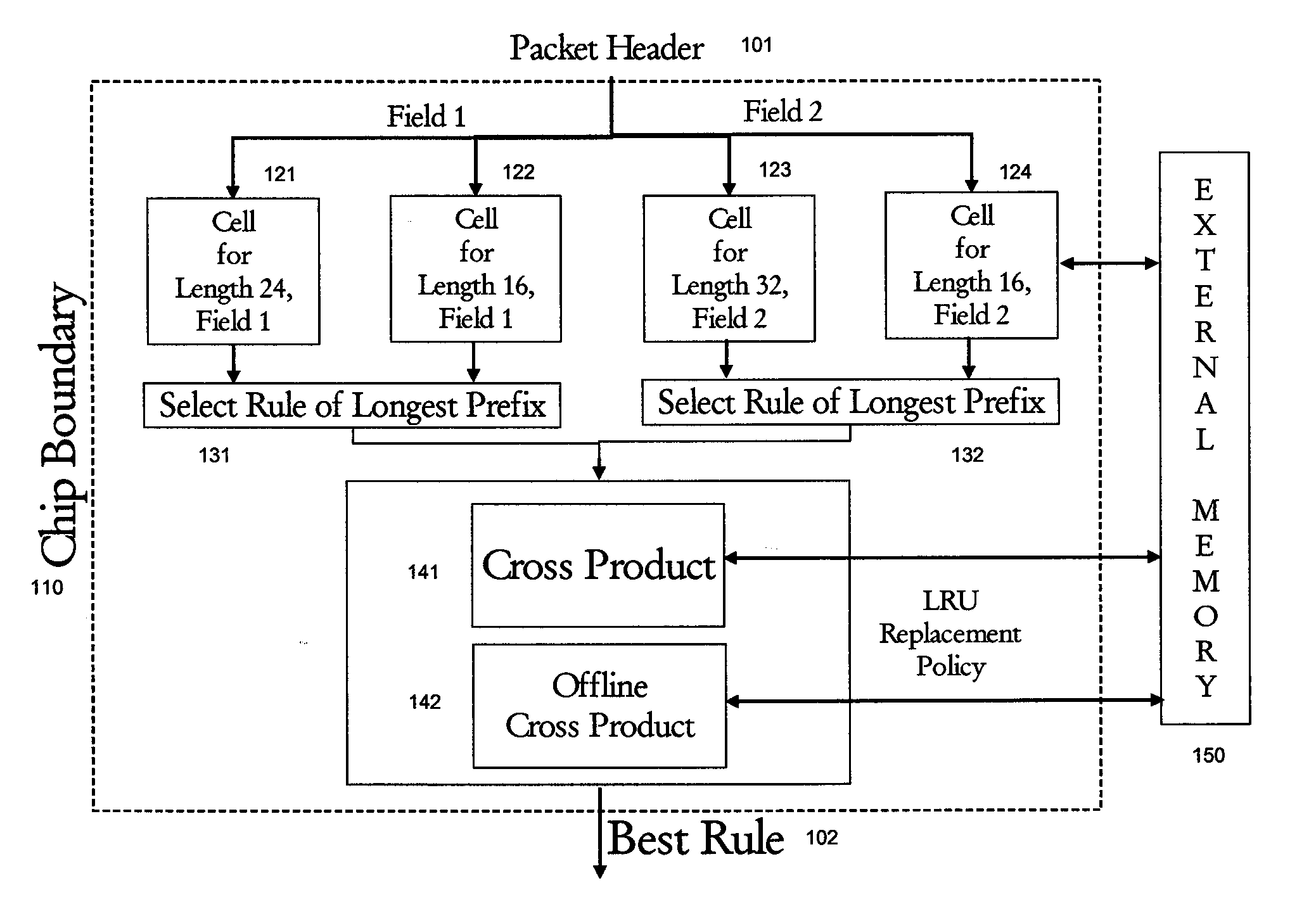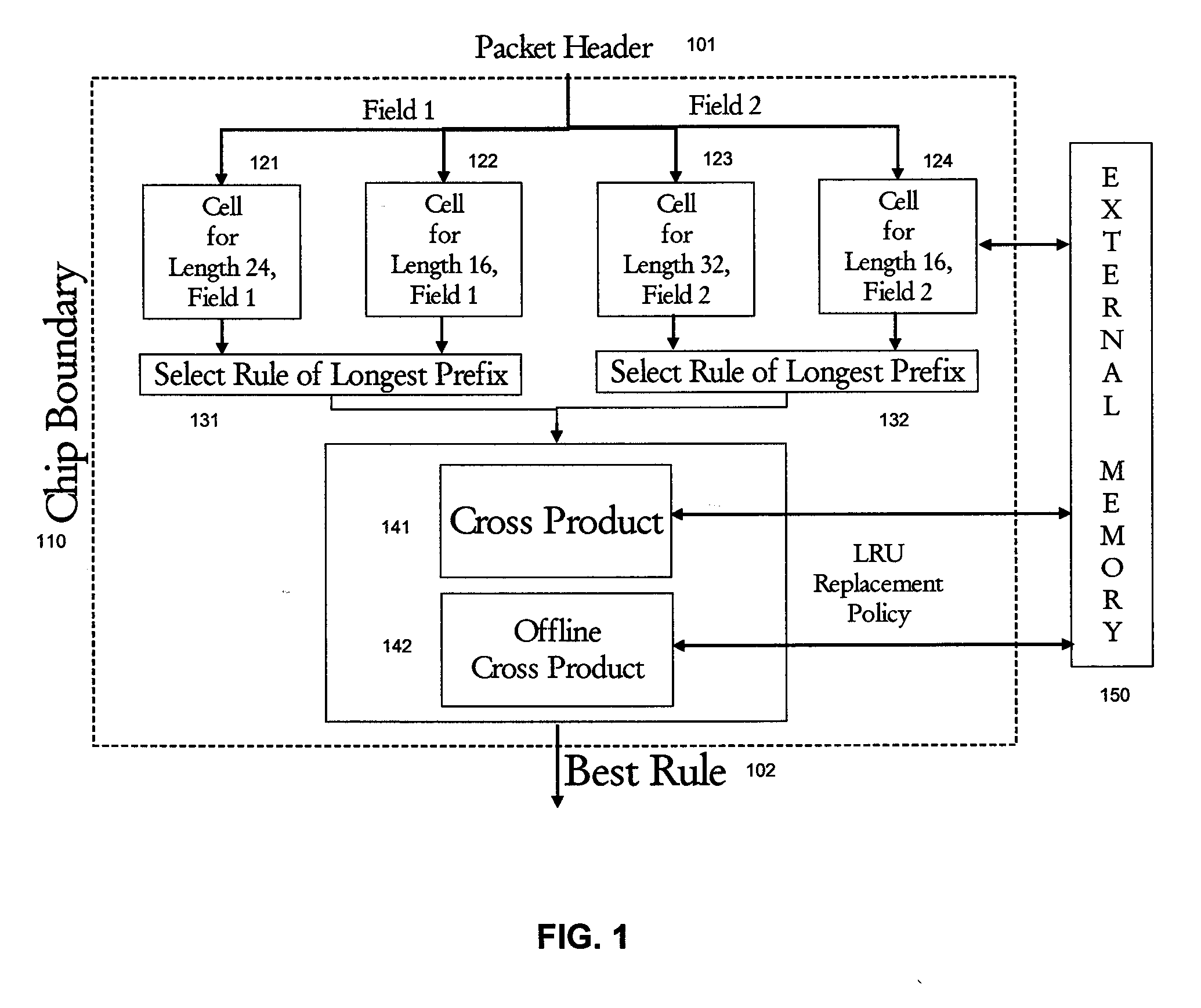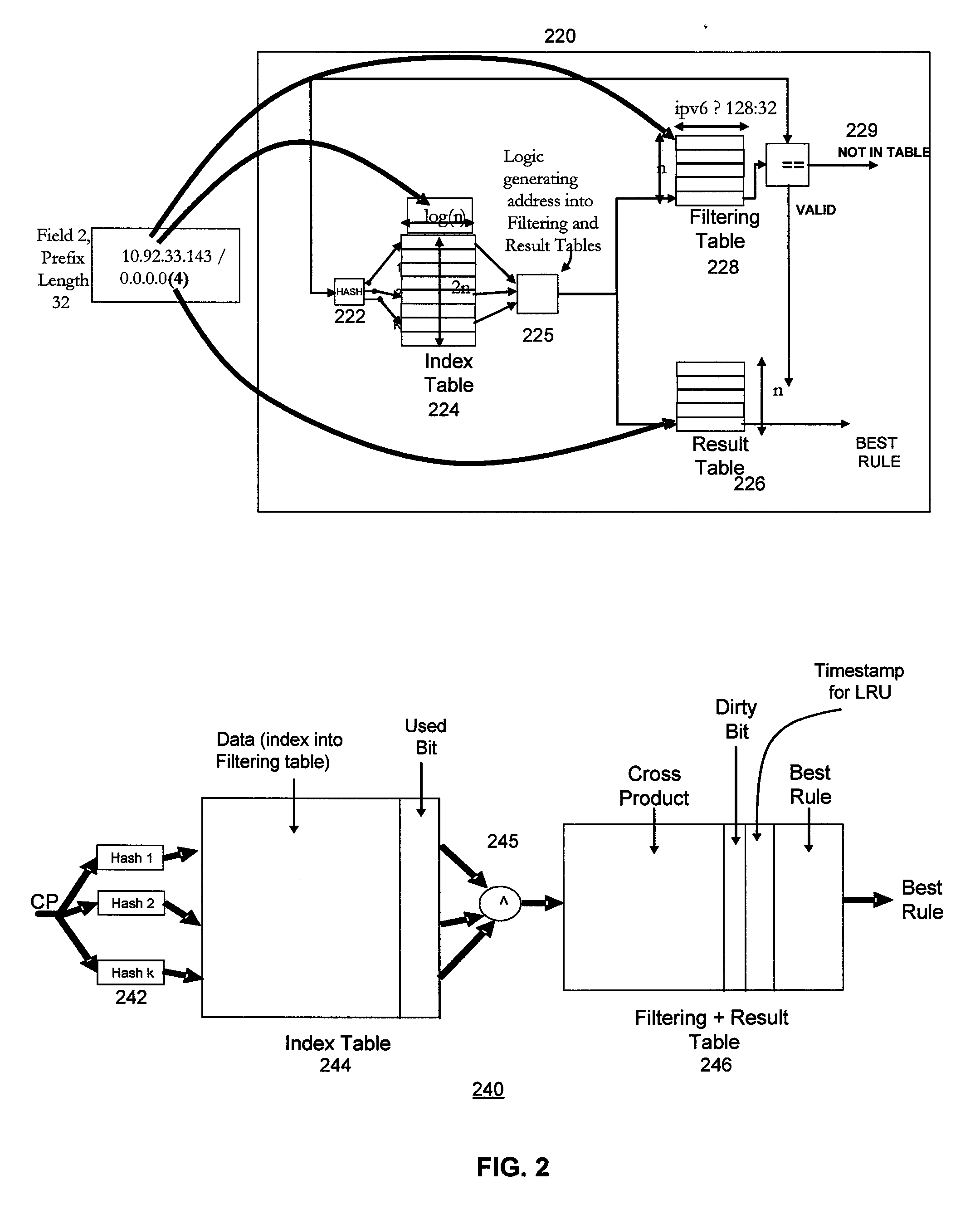Information Retrieval Architecture for Packet Classification
a packet classification and information retrieval technology, applied in the field of information retrieval architectures, can solve the problems of scalability problems, high cost of tcams, exponential complexity in time or space, etc., and achieve the effect of fast lookups, fast lookups for frequently accessed, and constant query tim
- Summary
- Abstract
- Description
- Claims
- Application Information
AI Technical Summary
Benefits of technology
Problems solved by technology
Method used
Image
Examples
Embodiment Construction
[0018]FIG. 1 is a block diagram of an embodiment of an information retrieval architecture. The information retrieval architecture is designed to handle a multi-dimensional search problem, which for illustration purposes herein is a packet classification problem. As depicted in FIG. 1, a set of input values 101 in the form of a packet header is received and processed by the architecture. Based on the processing of the input values 101, the architecture outputs a “best” lookup value 102, e.g., in the form of a packet classification rule.
[0019] A packet classifier is assumed to have N rules and an action associated with each rule. The rules are given priorities, typically expressed by the order of the rules in the packet classifier, e.g., the first rule having highest priority and the last rule having lowest priority. Each rule R has one or more fields, each field corresponding to fields of information in the packet header 101. It is assumed that the packet classifier herein has D fie...
PUM
 Login to View More
Login to View More Abstract
Description
Claims
Application Information
 Login to View More
Login to View More - R&D
- Intellectual Property
- Life Sciences
- Materials
- Tech Scout
- Unparalleled Data Quality
- Higher Quality Content
- 60% Fewer Hallucinations
Browse by: Latest US Patents, China's latest patents, Technical Efficacy Thesaurus, Application Domain, Technology Topic, Popular Technical Reports.
© 2025 PatSnap. All rights reserved.Legal|Privacy policy|Modern Slavery Act Transparency Statement|Sitemap|About US| Contact US: help@patsnap.com



